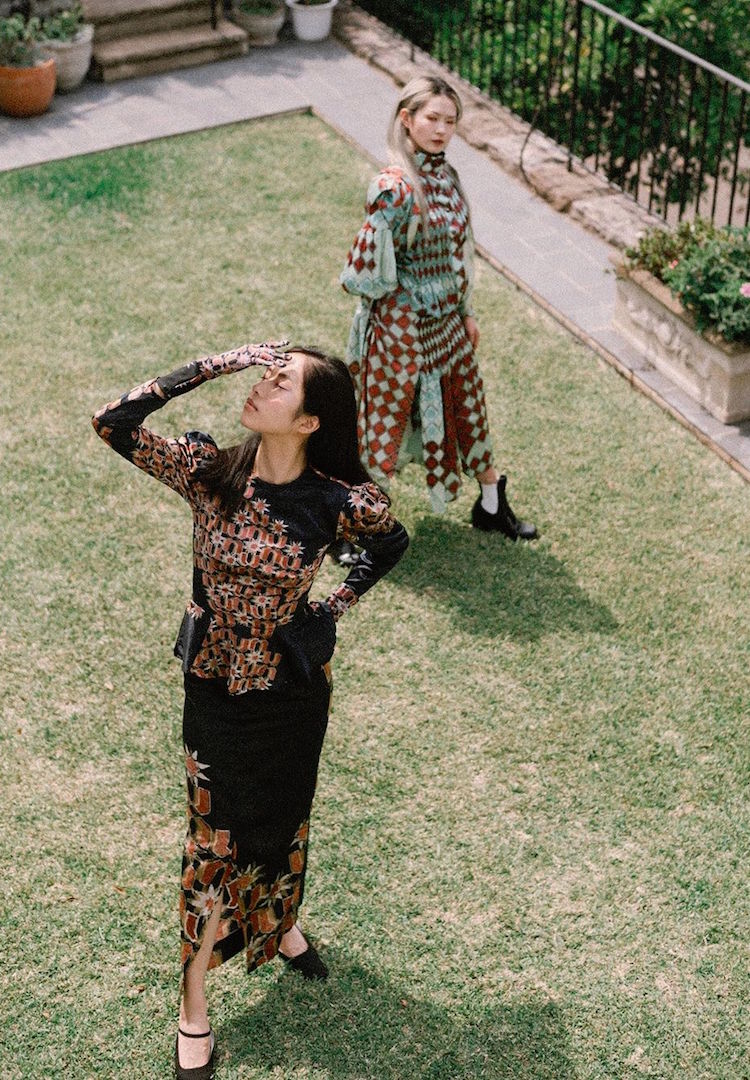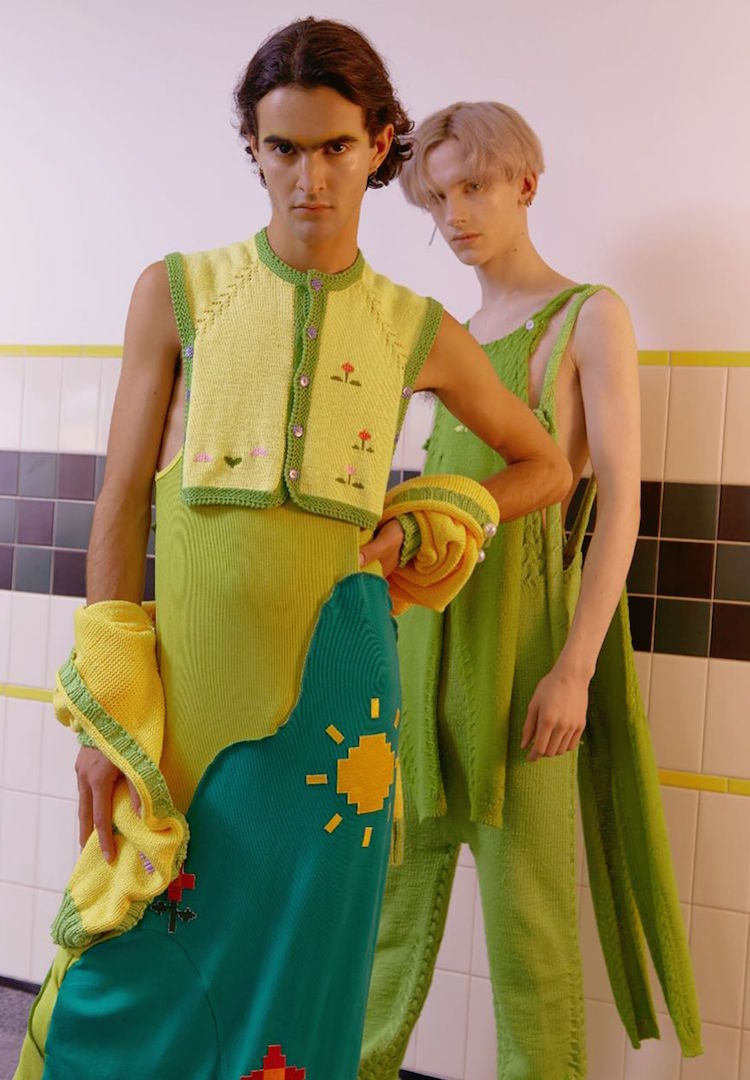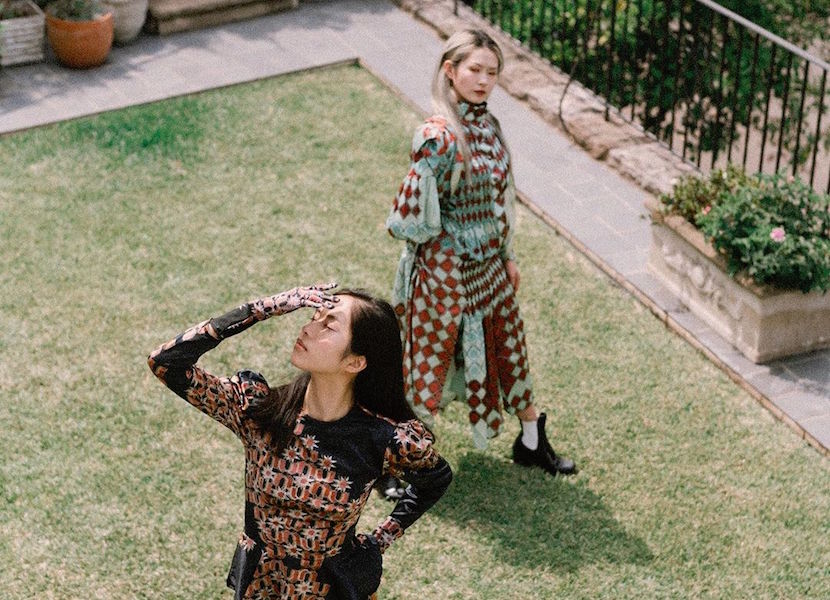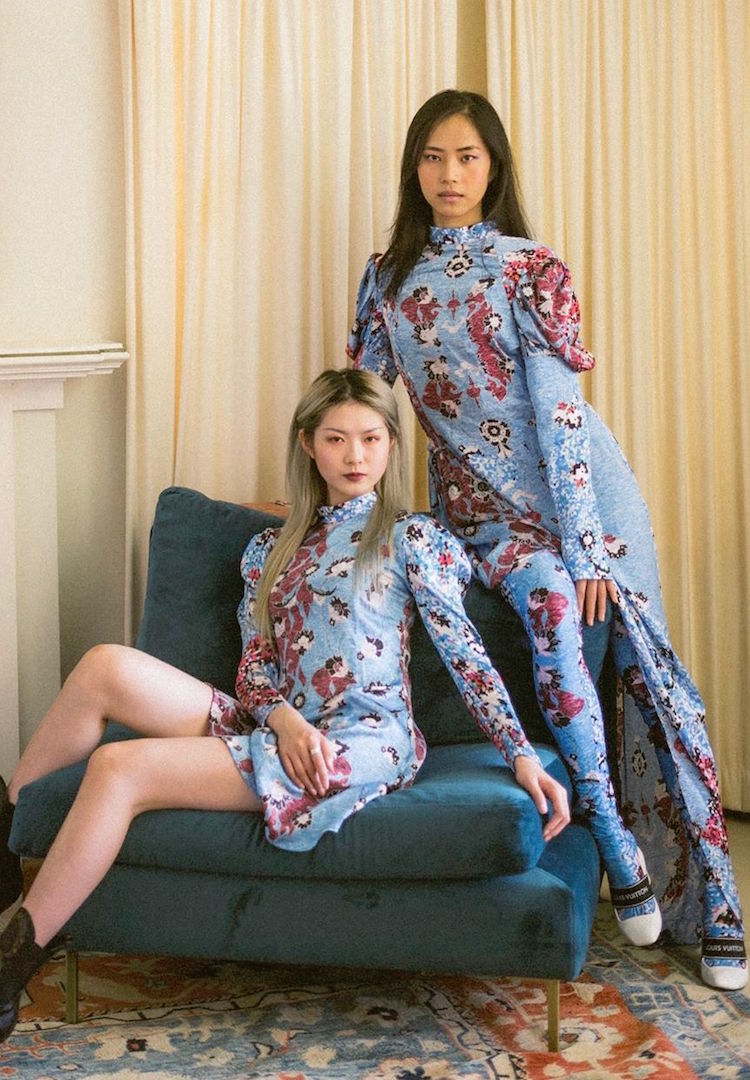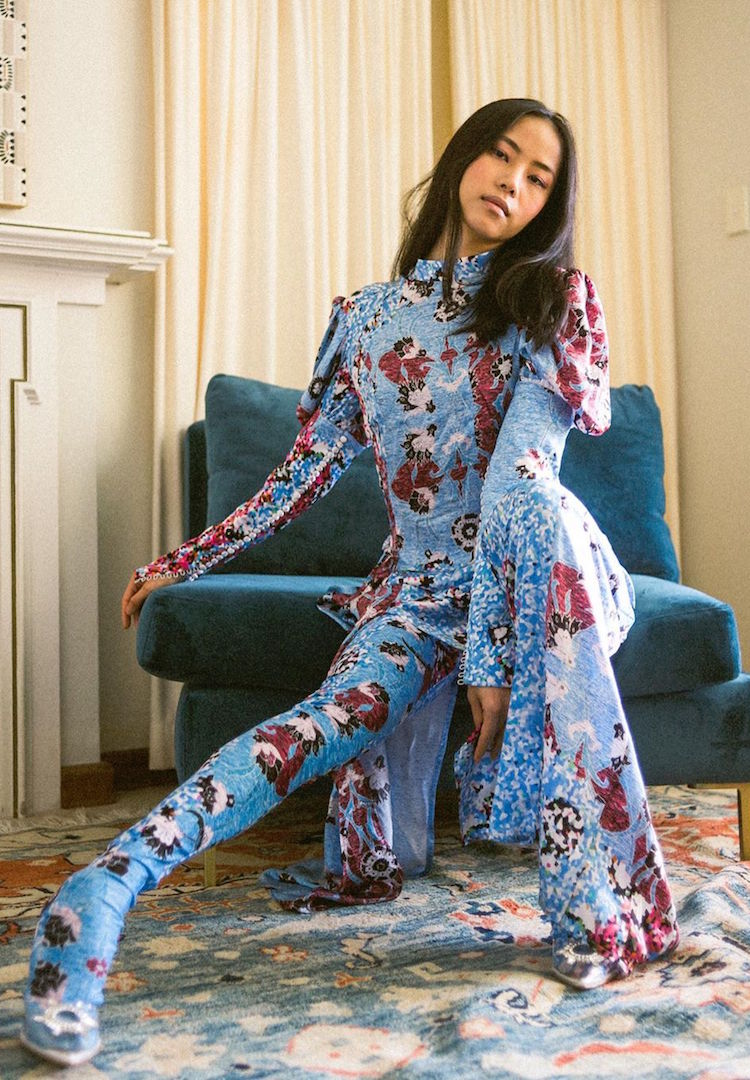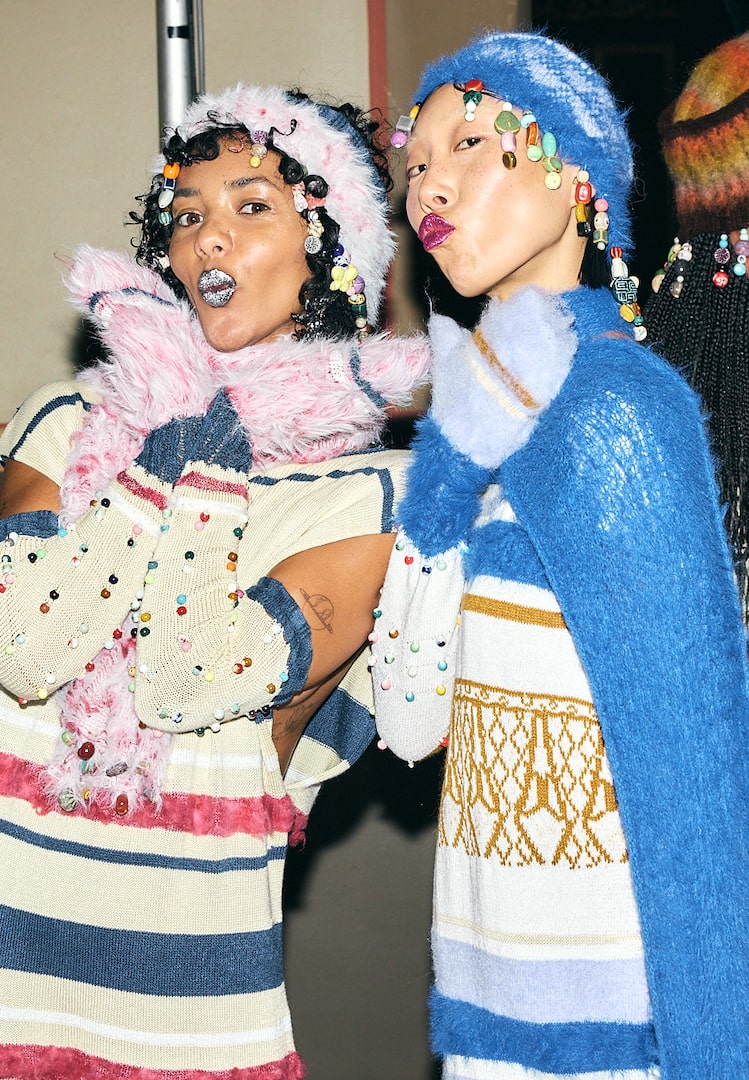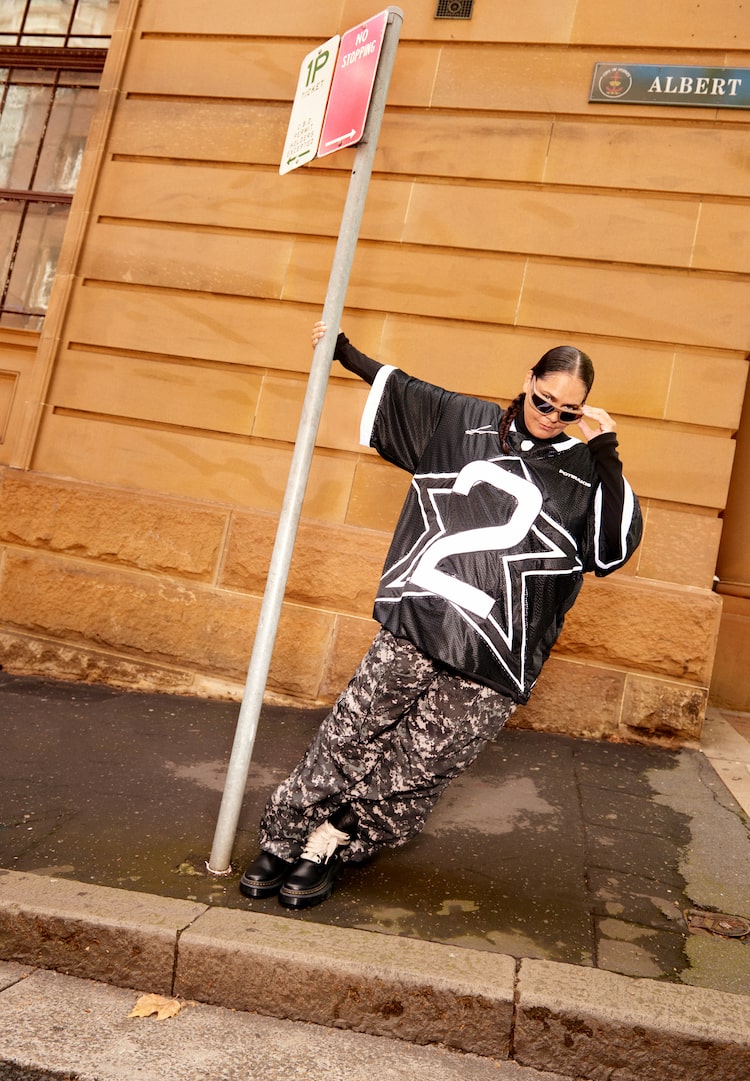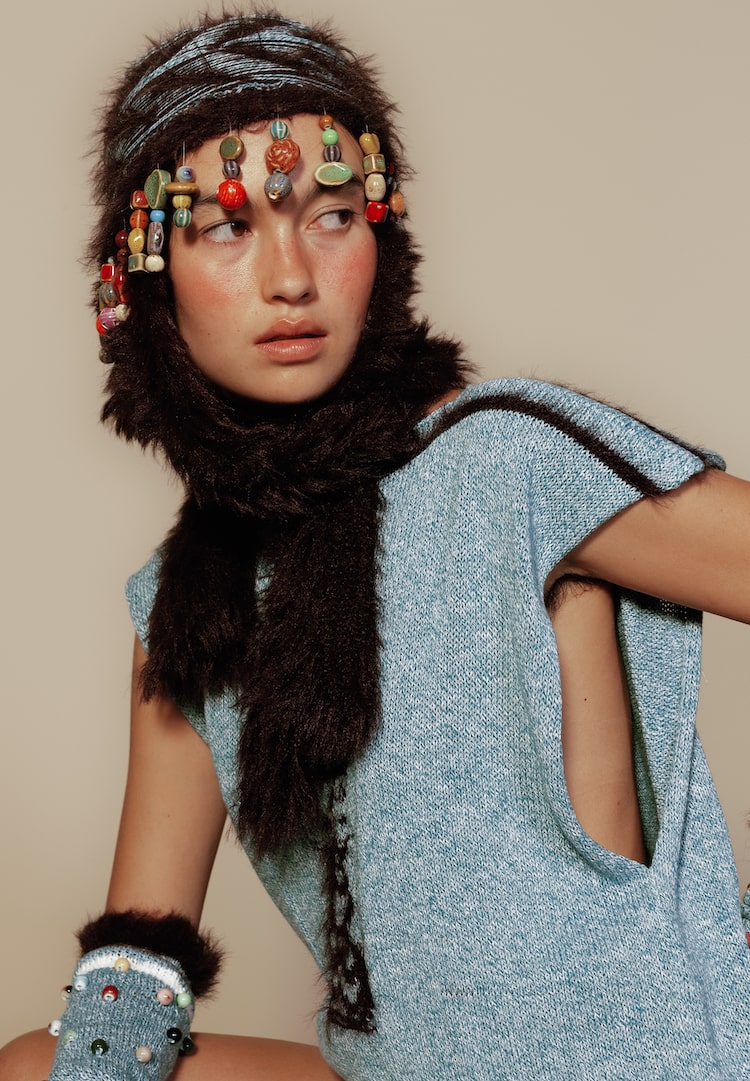Faiha Rahmani’s graduate collection is influenced by powerful women and royalty
Queens, dictators and first ladies, oh my.
Once again, Fashion Journal is the supporting partner of Virgin Australia Melbourne Fashion Festival’s National Graduate Showcase.
The 12 finalists for 2020 have been announced, and they’ve given us an insight into the process behind the collections they’ll be showing.
Next up: Faiha Rahmani and her graduate collection Of Two Minds.
Please introduce yourself to our readers.
My name is Faiha Rahmani. I’m an Indonesian-Muslim girl that was born in Jakarta, then raised in Sydney since I was three years old. I recently graduated from UTS, completing my Bachelor in Fashion and Textiles Design with Honours.
Tell us about your collection.
My concept is based around my own experience with indecisiveness and the subsequent loss of identity I’ve experienced through conflicting decisions regarding my culture and religion.
Imagining a scenario where I was designing for a Queen or a woman in power, I aimed to create shapes that are modest yet fitting for such a powerful woman. My prints are inspired by Turkish textiles as homage to my Islamic background. The juxtaposition of contrasting prints and colours creates an eclectic hybrid, alluding to a sense of confusion and indecisiveness. It’s a mosaic of past and present, mirroring the dichotomous aspect of my own life. The use of modest silhouettes is a reference to Muslim dress codes.
When did you know you wanted to get into fashion design?
I went to a private Muslim school from Year 10 to Year 12, and the majority of my cohort became teachers, doctors or lawyers. I wanted to be different. Growing up, my mother enrolled me into an art school when I was seven years old, and my grandmother’s profession involved painting flowers on canvases as well as clothing. I loved art when I was younger and wore everything my grandmother made me. I attempted to study industrial design after graduating from high school but realised it wasn’t right for me and decided to pursue fashion.
How do you describe your design style?
My design style is highly eclectic and feminine. It’s very different from what I wear on a daily basis. I intend to convey meaning through my work, and for this reason, I create my concepts around my personal experiences, whether that’s my culture, heritage or religion.
What were the major points of inspiration for your graduate collection?
My Indonesian culture and my religion were the major points of inspiration. The prints featured in my collection came from my family’s trip to Turkey in 2017. The Topkapi Palace in Istanbul inspired me – the tiles that decorated it were as beautiful as they were mesmerizing. I started by reimagining the delicate and intricate paintings on the tiles with simple pencil and paper, before scanning them and using Photoshop to colour and manipulate them into something with a more digital, modern edge.
Why did you choose the specific muse of a queen or dictator?
Women of power inspire me, as part of my research was also based on the Renaissance. I was looking at the luxury garments worn by Queen Elizabeth I. However, as I began to consider a more modern source of inspiration, I thought of Imelda Marcos, who was the First Lady of the Philippines for 21 years. She would always wear puff-shouldered dresses and gaudy garments similar to Queen Elizabeth. The similarity between the ways in which these two women of power dressed was how the dictator concept came to mind.
What does ‘power’ mean to you and how does it play into your design?
Power, for me, is being confident and loving yourself for who you are. I always struggled to accept myself, so my garments are designed for my confident alter ego. My collection is bold, decadent and ‘powerful’ because I imagined a woman of power wearing these garments and referenced the wardrobes of women in power through the silhouettes. I made the silhouettes long to pay tribute to evening gowns and occasion wear – a style of dress that women adopt when they want to look and feel their best.
Tell us about the experience of putting together your graduate collection.
Nowadays, it’s difficult to be original and find inspiration that remains true to yourself and your identity. It was a struggle to find research that was relevant to my culture and my aesthetic.
Patternmaking has always been my weakness, but I wanted my prints to be featured on intricate garments, so I pushed myself to further develop this skill.
Working on my graduate collection taught me to focus on my strengths. Although it was a highly stressful year, and my friends and I would stay up late into the night to complete our garments, we could often find amusing ways to de-stress each other and ourselves. Luckily, I had a lot of support from my family, my loved ones, and my close friends. I couldn’t have completed this course without them.
What part does sustainability play in your design practice?
My design research consists of studying vintage garments and looking for inspiration in renaissance clothing. I would often source gowns and coats in op-shops and take them apart in order to drape them and find tailoring inspiration.
I specifically wanted my garments to be 100 per cent silk due to the biodegradable nature of the fabric. It is also a resilient natural fibre – the quality of the fabric will continue to last, so the wearer can continue to enjoy my pieces. Silk also reflects light and showcases my prints beautifully.
The outerwear in my collection is made from silk wool. Wool is another natural fibre that I began to consider when working with Think Positive Prints, whose selection of fabrics allowed me to see natural and biodegradable fabrics that could be utilized through digital print. They have fabrics made with hemp, organic cotton and nylon fabrics made with recycled plastic bottles – which I used to create my leggings in my Honours collection. In the future, I want to continue creating garments using natural fabrics. I want to start my own label with sustainable practices, and to experiment with other sustainable fabrics – such as banana fabric, which is found in the Philippines – that can be screen-printed and manipulated.
What’s next for you?
I’ve applied for a master’s degree, and I want to further my study. I want to improve myself as a designer and continue to learn about fashion, garment making and fashion culture.
However, if that doesn’t work out, I plan to create a brand with a strong social and web presence. I intend to create my own signature staple pieces by altering my current collection – taking the essential design elements and translating them into wearable, accessible garments.
Find more of Faiha’s work here.
@faiha.rahmani


